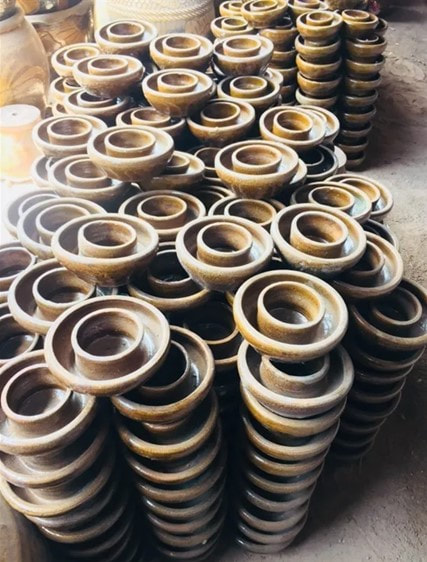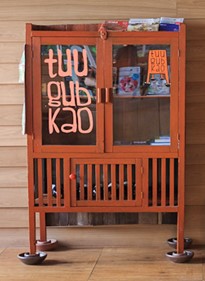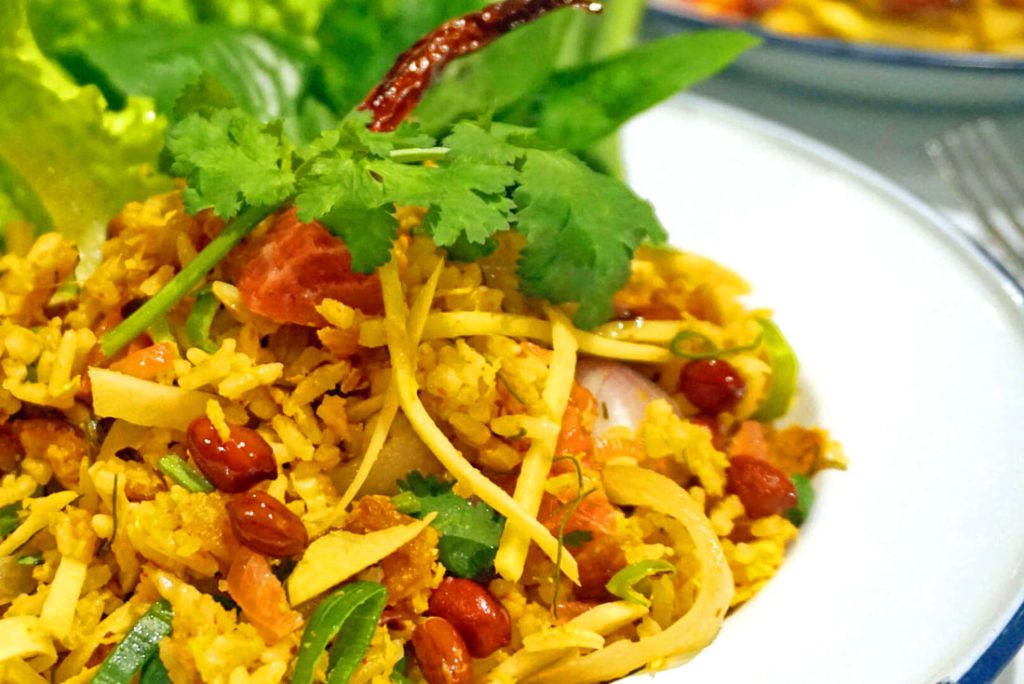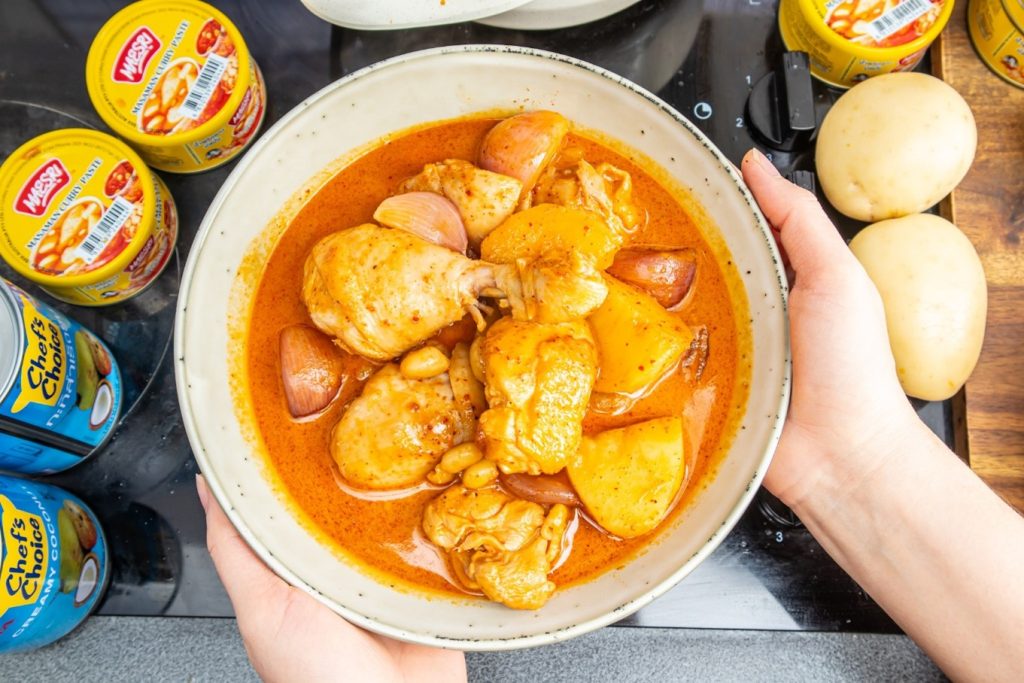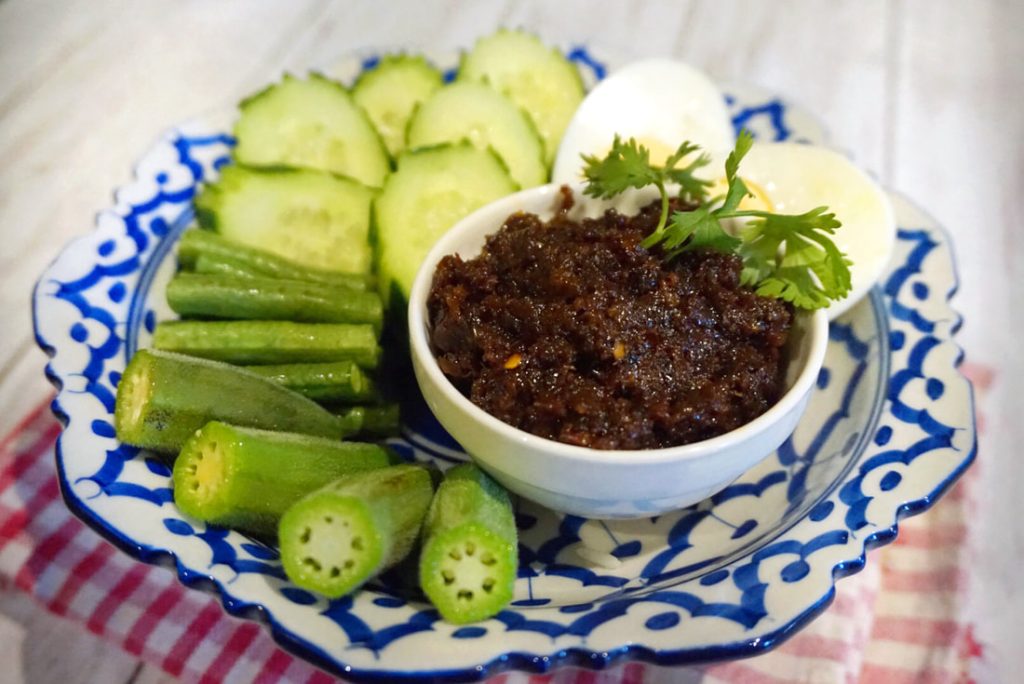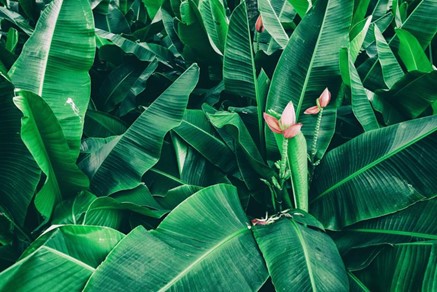We are continuing our tour of the Thai Traditional Kitchen from Part II. This week, I will introduce you to a unique piece of kitchen furniture you might find in a Thai Traditional Kitchen. This item is used to keep flies and insects away from food and to store cooked meals at room temperature, when microwaves and refrigerators weren’t around. Can you guess what is it? The kitchen object that we are going to explore today is the Thai Traditional Food cupboard (Thai:ตู้กับข้าว).
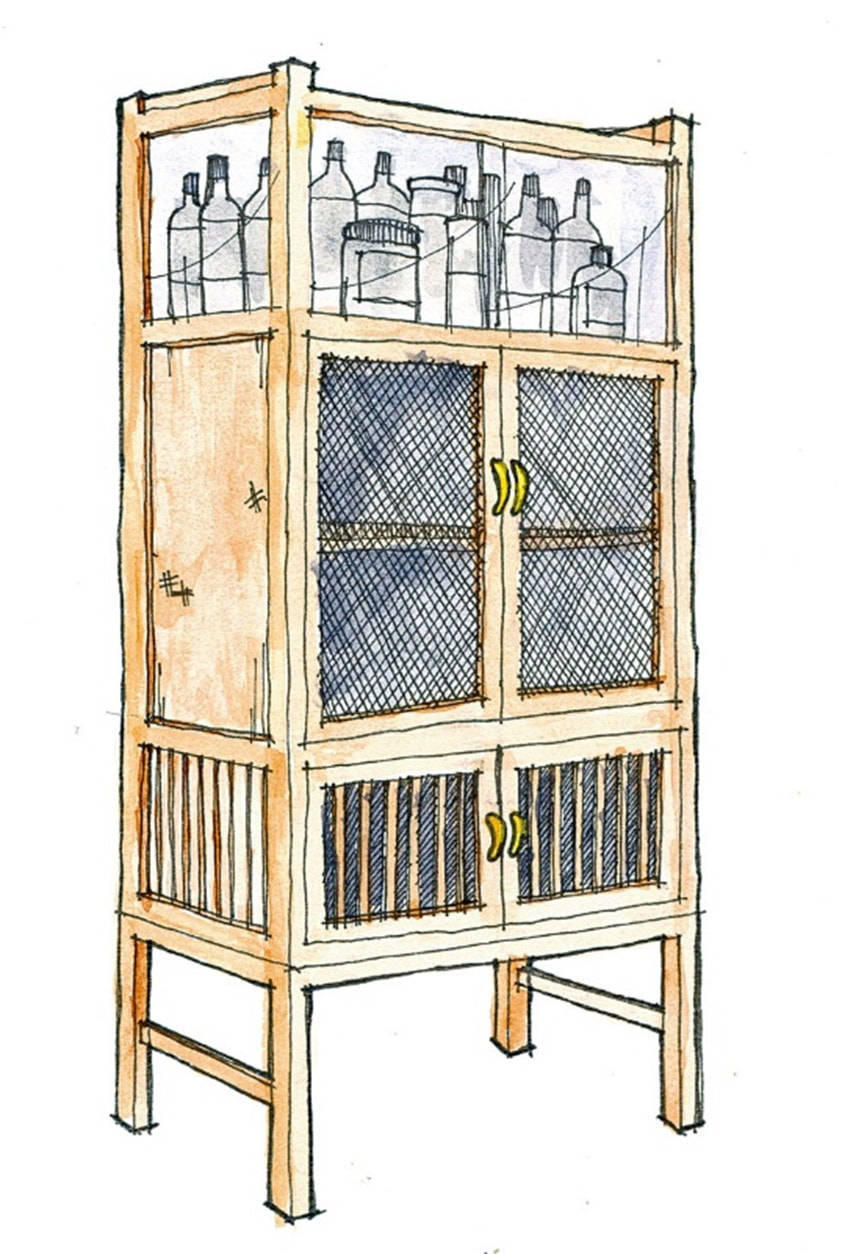
Figure 1 A drawing of Thai wooden kitchen cabinet (Image retrieved from https://www.baanlaesuan.com/49044/ideas/thai-house)
The kitchen cupboard represents a Thai way of life for extended families, in which food was prepared and kept in the cupboard throughout the day for family members who may have missed out on a meal. Tu (Thai:ตู้) means a cupboard and Kab Kao (Thai:กับข้าว) means dishes so you can definitely expect more than one ready-to-eat dishes in this cupboard.
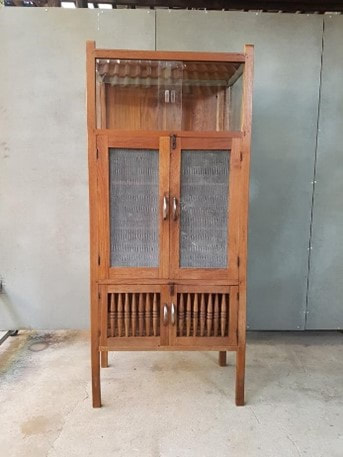
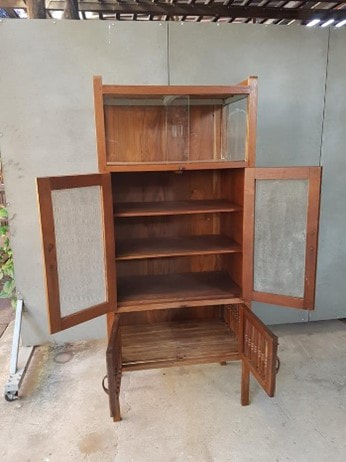
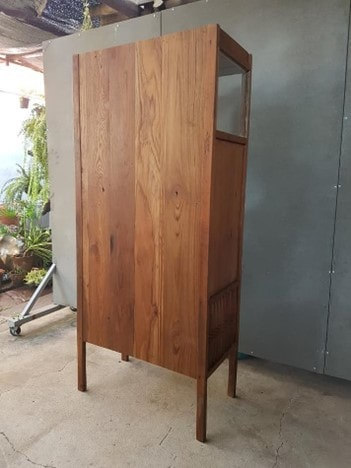
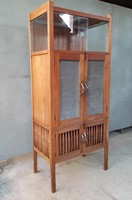
The Kitchen cabinet is different from a display cabinet with a greater depth. The width is usually around 70 to 120 cm and the height is between 165 to 180 cm, however you might come across a smaller version with one or two compartments for food storage only. The Thai-traditional cabinet is made from wood and typically consists of three main sections. Firstly, the top component is used to store canned food, glassware, or kitchen-related miscellaneous items. Secondly, the middle part is designed by using metal mesh/wire screen for a good ventilation and protecting food from flies and its purpose is to store cooked meals and side dishes. Lastly, the bottom section is slat shelf and doors which use for storing dinnerware after washing and drying with tea towel. The slat design helps the dinnerware to air-dry properly without causing waterlogging and mould.
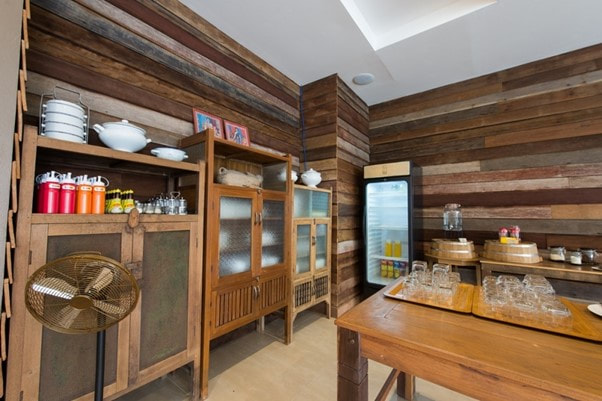
Figure 3 Kitchen cabinet is unique and important furniture in Thai kitchen (Image retrieved from https://www.forfur.com/media/idea/)
In terms of energy savings and an environment-friendly option, Thai Traditional Food Cabinet is a classic and alternative way of keeping freshly cooked food during the day without depending on a fridge and you don’t need to use a microwave to warm it up often.
The kitchen cabinet are still popular nowadays and has been developed, designed and built with better materials such as aluminium, PVC (Polyvinyl chloride) or WPC (Wood Plastic Composite) for longer lasting and easily maintenance and comes in various sizes to suit different households.
The kitchen cabinet are still popular nowadays and has been developed, designed and built with better materials such as aluminium, PVC (Polyvinyl chloride) or WPC (Wood Plastic Composite) for longer lasting and easily maintenance and comes in various sizes to suit different households.
Figure 4 Image retrieved from https://www.nanagarden.com/ Figure 5 Image retrieved from www.chillpainai.com
Another interesting feature that you will see with Thai Kitchen cabinet is double-layers cup, with the inside cup for the cabinet leg and the outer filled with water, agricultural lime or oil. This is to protect the cabinet from ants, especially in the rainy season. Oil and water mixed with vinegar is better than water as it won’t turn to be a mosquito breeding ground. You will find a variety of these special cups made from plastic, earth ware or ceramic.
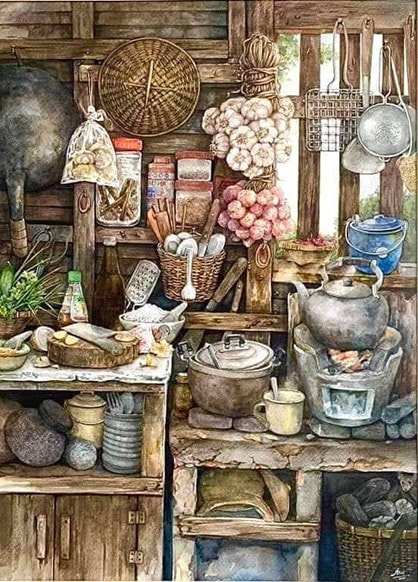
Figure 6 A beautiful painting of Thai traditional kitchen representing Thai way of life (Image retrieved from https://m.facebook.com/SiamThaiPerfume/photos/)
I remembered hearing my grandma telling me when I woke up that there were fried pork balls and Nam Prik in the Too Kab Kao for breakfast tomorrow. This means I can help myself whenever I am hungry. When my grandma passed away, my mum, uncle and aunt are still doing the same thing whenever I visit my hometown. There is always food in the Tu Kab Kao for me. This always makes me feel special that they always think about me and remind me of the sweet memories about our kitchen cabinet and our old kitchen in my hometown. I wish my series of the Thai Traditional Kitchen brings you lots of childhood memories about your own kitchen. See you later.
References
https://www.baanlaesuan.com/49044/ideas/thai-house
https://jeridea.blogspot.com/
https://www.forfur.com/media/idea/7009/7009_1524550181449190334
Parita Nobthai runs The Craft Humpy
“a homely place where you can get beautiful handcrafted gifts directly from the maker”
“a homely place where you can get beautiful handcrafted gifts directly from the maker”



